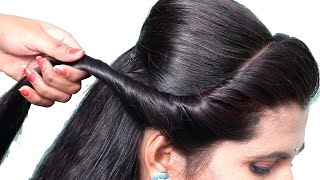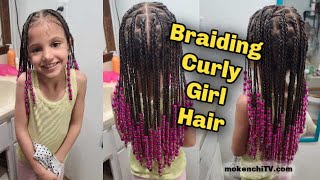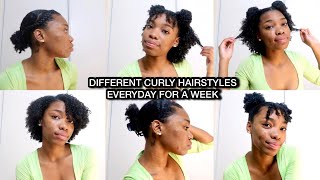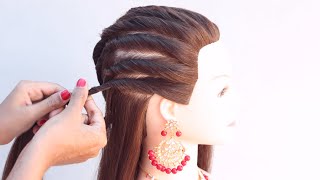How To Make A Hair Weft
- Posted on 13 May, 2020
- Braids Hairstyles
- By Anonymous
This video guides you through the process of creating a hand-tied hair weft. I hope you enjoy.
Please like and subscribe for more videos concerning hair and makeup artistry!
Hi and welcome to my channel RW effects, I'm Robin a hair and makeup artist based in southwest for my first ever video I'll, be showing you how to make a hand-tied hair wefts. If you'd like to see, please keep watching before we begin, we must ensure that we have all the equipment we need. This includes a sturdy table. Clamps weaving sticks, weaving thread, a drawing map to hold our loose hair in a bowl of water, scissors and sheet of paper. The first thing I'll be showing you is how to set up your weaving sticks taking one of the clamps. I position this. On the left hand, side of the edge of a table and screw up the bolt so that it sits nice and secure. The other clamp is positioned on the right hand, side leaving about 40 centimetres distance in between the distance between your clamps really depends on how long you want the weft. If you know this will be lengthy, be sure to leave sixty to seventy centimeters instead taking the weaving sick with the smooth edge. I sawed this into the clamp on the left hand, side. The other weaving thick goes into the clamp on the right hand, side as they. Next we need thread in order to make our whacked you can weave with either two or three threads. However, our beading three in order to show you both techniques, known as once in and twice in weaving, taking my loose piece of paper, I'm just cutting out three equal sections which is used in the process for stringing the sticks. This just provides an extra grip when we wrap around the thread taking the thread. I measure the distance between the two steps allowing myself plenty of excess before cutting off the thread. The end of the thread is then folded inside a square piece of paper and placed around the top compartment. Here I hold this in place and wrap around the thread a few times to accumulate a few centimeters. I then stretch this across tying the thread around an attempt free at least not. I then complete this process, both middle and bottom compartment. Before joining all the ends together holding the three ends. I pull this slightly and slide on the thread so that they join at the same point still holding the end. I wrap them over the three threads and secure a knot, as so a double knot can be completed here, just to prevent anything from coming. Undone with the three threads now nicely secure, the tension of the thread between the two sticks must be taught. So if it seems a little loose, you can turn the right stick to tighten. We are now ready to begin weaving with working left to right. We first form a starting knot to prevent the hair from our raveling. For this we need our bowl of water and our drawing mat and our loose head. Taking about ten transparent map, I hold the roots between my thumb and index finger dipping the ends of the hair until little bit of water will help them stay together easier when weaving the general technique of weaving is going in and out of the three threads. You begin to form an M shape by going first leave behind the bottom string and then in front of the top two strings weave then go behind the top string and in front of the bottom two strings. Holding these in place. With our left hand, we go back behind our right hand, going, firstly behind the bottom string in front of the middle string and back under behind the top string, the hairs and then taken in front of the top two strings and back behind the bottom string. Holding this in place, we then slide it across to the left before the Strand on the left goes over the weave and across in between the middle and bottom string. As can be shown, we then pull on the hair tightly to secure, be starting rod. The starting knot formed we can move on to the once in weaving technique which adopts the same M, shape method, each new knot. We take the same amount of hair, which is about 10 strands and dip their ends into some water, as we did before. We start by going under the bottom thread and over the top two threads. We then go behind the top thread and in front of the bottom two threads as we did with the start. Not. We then change the technique slightly by going behind the bottom two threads and in front of the top threat. We then gave behind the top thread in front of the middle thread and back behind the bottom thread, each new knot we slide across to the left and pull down onto the hairs. I continue to complete the wants Envy technique until the desired length of weft is achieved at first, it will seem confusing and complex. However, after a few repetitive turns, you will have become familiar with the general pattern. The next technique of showing you is twice and weezing, which can be used instead of Watson breathing. This gives you more space in between the knots and an overall thicker base to the weft. The technique, each ease or prefer all depends on what you want to achieve. Personally, I prefer the once and weave, which gives me a finer and tighter knot for those that have mastered the wanton weave technique. Trying out the twice in a weave technique might be beneficial to see which you personally prefer to do. Of course, the twice in weave is slightly more advanced than the watson weave. We start by doing the exact same routine as a once in weave stopping at this point where we've gone over the top string. We then add in this extra process again here we go under the top string and over the bottom, two strings back under the bottom. Two and over the top, then we resume to complete the knot in the same manner as the once in we've going under the top string over the middle string and back under the bottom. We then slide it over to the left as usual, pulling down on the hair to secure it in place. Once we have the desired length of weft, we need to complete a finishing knot. This again just keeps everything in place and stops the hair from unraveling. Once it's cut off the thread, all we do here is complete the same routine as a once in weave. The only addition is like we completed with the starting, not taking the right hand strand this time crossing over the weave into the space between the mid and bottom thread, fly it across and pull down on the hair, with all of the other knots cutting off the Work should be done so and careful and particular manner start by cutting off the bottom thread. At the right hand, side about 15 centimeters away from finishing, not use this loose thread to do a knot by looping it up and round the other two threads ensure to make this really tight and secure completing a double knot. If necessary, you, you can now cut off the other two threads and trim off the excess thread left hand. Side are sides of thread off the wedding, stick and trim the excess. You will already have a knot in place from the start when stringing are weaving. Sticks continue to trim and tidy up the weft. Cutting the thread as close to the knot as possible. Here is the finished weft weft can be used for hair extensions to sew onto wigs or make hair pieces from. This is a close-up shot of the final result. Thank you for watching. I hope that you enjoyed, if you did don't forget, to give it a thumbs up below and subscribe to my channel for future videos.





Comments
MeadowsZ: This is so helpful for making bang wefts out of hair that's been cut from a longer wig!
A Deznecessária: I love the video, thanks for posting such a great material !! 5 stars!! Can you please say what distance between the table clamps is the best for wefts of 30cm? and for smaller/longer wefts? Do you sell these weaving clamps and weaving sticks?
Danielle Charland-Gruhzit: Much better than glue!!! Thanks so much!!!
Kirsty Riley: What weaving string do you use x
Suzanne Duke: Hi thank you for this great video. Where can I buy the tools and equipment you used ?
Tina Ikujegbe: I can't thank you enough for this.
Diunique Williams: You did Great! Keep up the great work
lostmydog tan: Can u also make a video how to remove the treads in hair extensiond?
Victoria Pritchard: I bought tape extensions and had them installed and I did not like them so I now want to convert them into wefts so that they don't go to waste, this video has been most helpful to me.
Danna C: Hi, I don't quite understand the logic of hand tied wefts. It looks like I'm going to loose a lot of length on my raw hair if I do this. And question, can we still color this kind of wefts knowing half of the hair is in the opposite direction making keratin open at a different direction too
acidceed: do you take orders for making wefts?
Деница Иванова: Thank you so much !
Hello Grace: you've saved me!
Michael Max Gierl: @robinwilliams what kind of thread do you use?
MILLIE ELIZABETH: Love this welcome to the YouTube fam ❤️
Serena Czippel: May I send my hair to you to make wefts for me please?
Warner: Good video.
Linda Ogechi: Nice video
Magda Rodrigues: Tecer direto no cabelo
Serena Czippel: Do u offer this I need hair doing ??
lakene Carole: ❤️❤️❤️❤️❤️❤️❤️❤️❤️❤️
Craig Bevan: Do u offer this I need hair doing ??